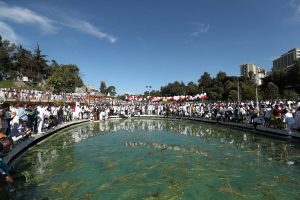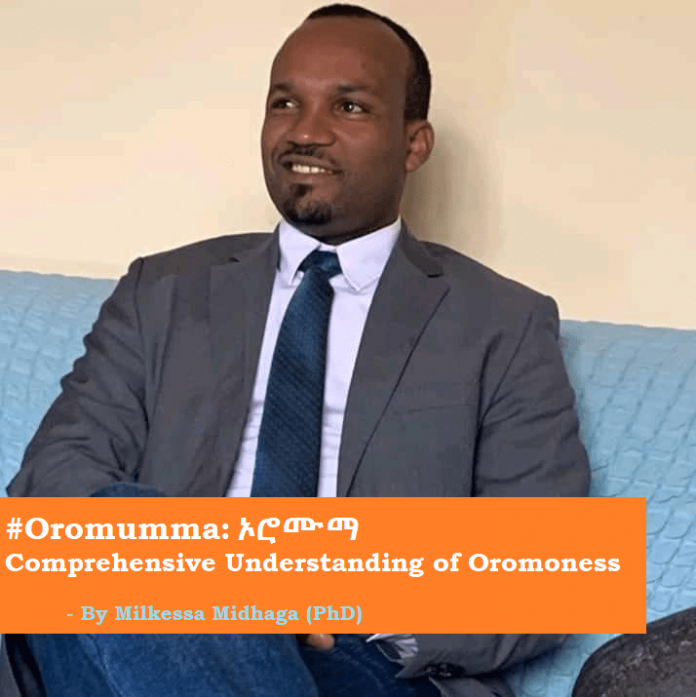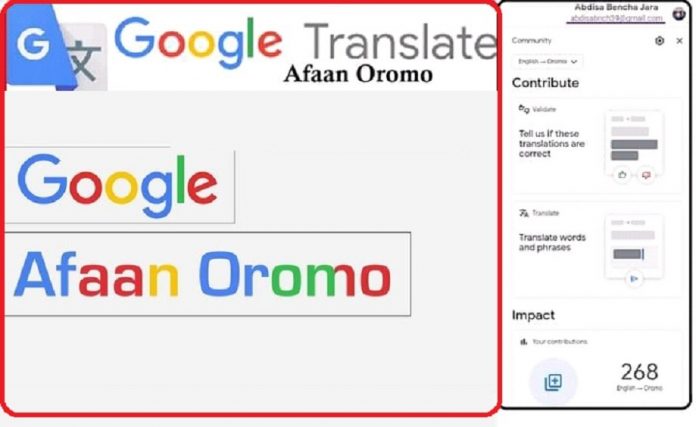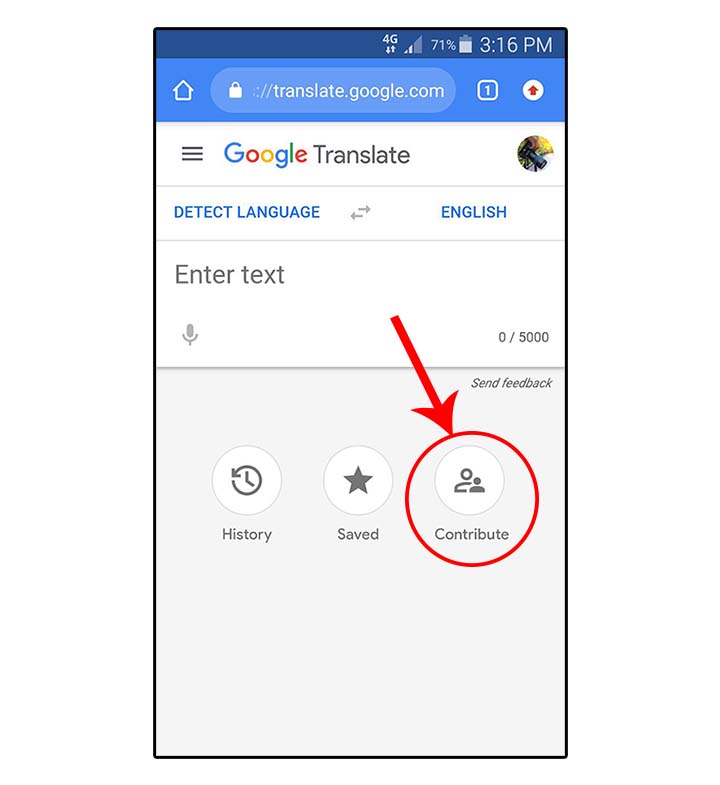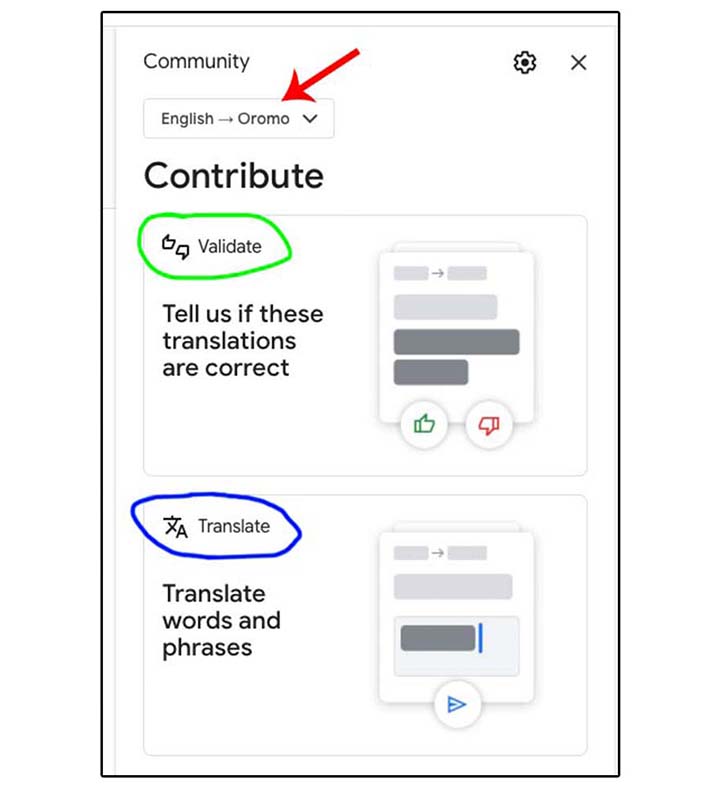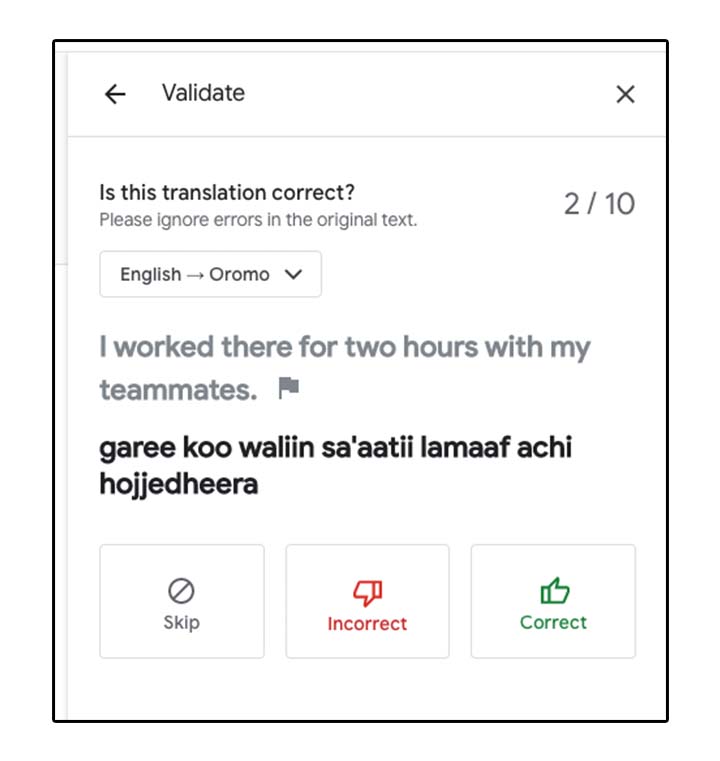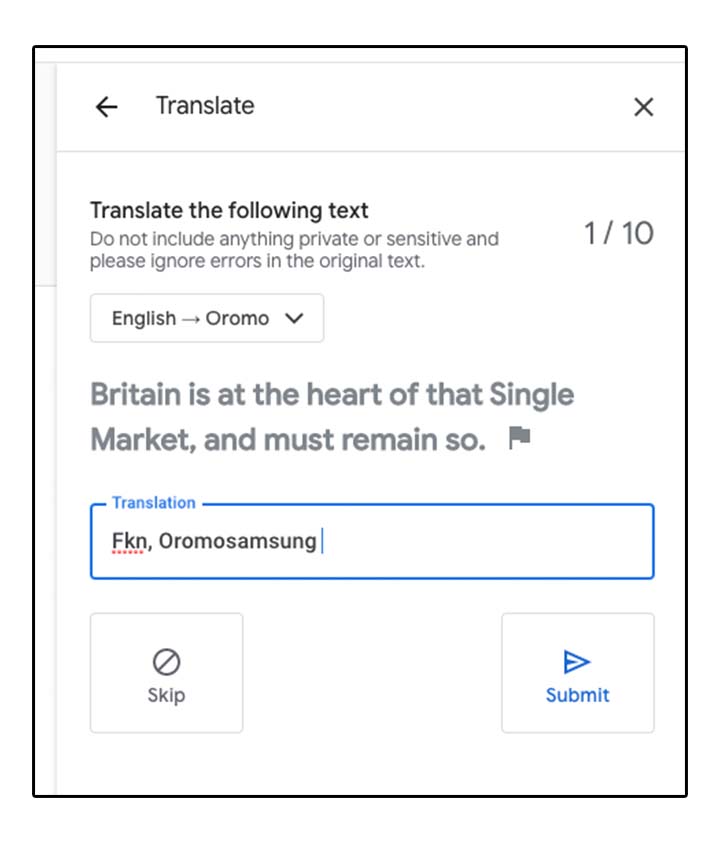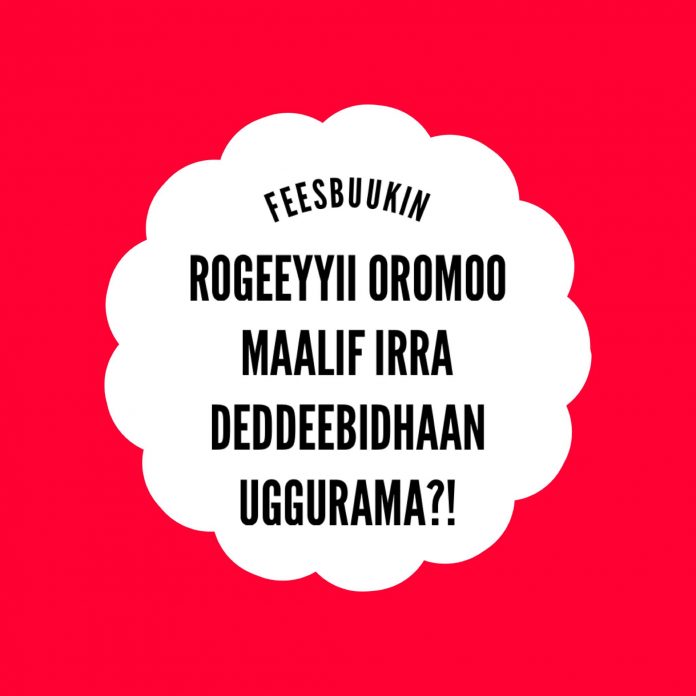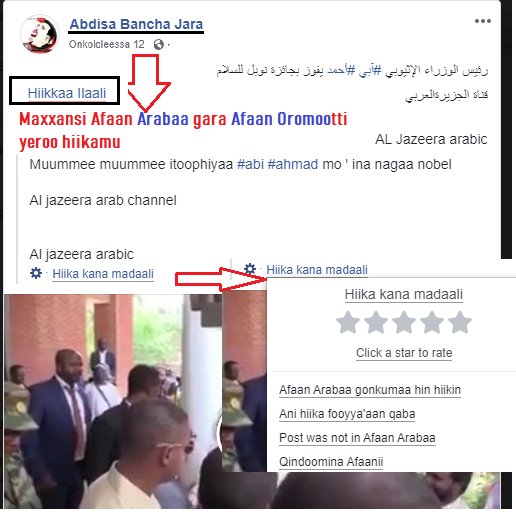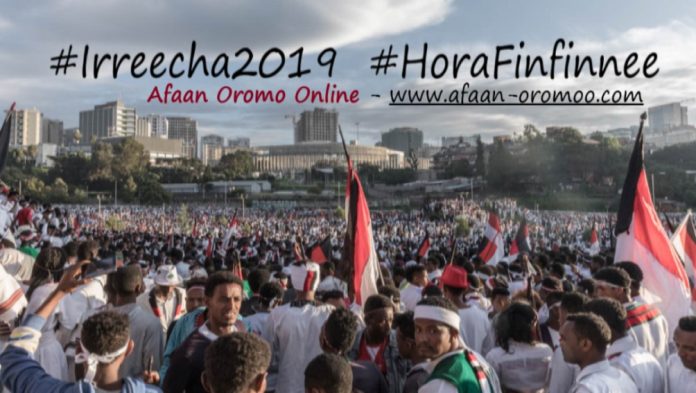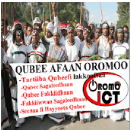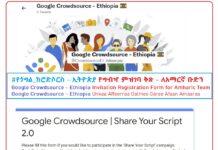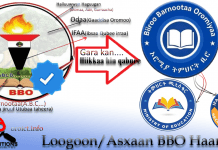
#Oromumma(ኦሮሙማ): Comprehensive Understanding of Oromoness – By Dr.Milkeessa Midega

Irreecha: From Thanksgiving Ritual to Strong Symbol of Oromo Identity
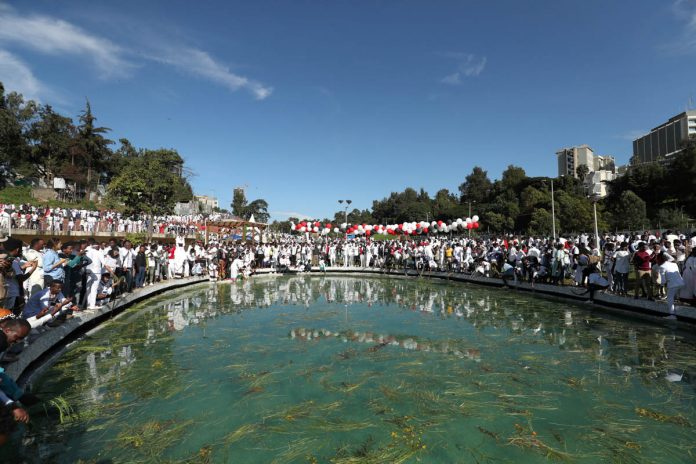
Introduction
It has become evident since recently that the Oromo across religious, political and geographical boundaries have converged together in celebrating an annual ritual/festival called Irreecha. Historically, Irreecha has been understood and practiced within the context of the Oromo religion, Waaqeffannaa – a belief in one supernatural power called Waaqa(God). However, as I will discuss shortly in this piece, Irreecha has undergone some transformations in accommodating non-religious aspects of the Oromo culture, and thus has played significant role in building the Oromo identity and sense of unity. In the contemporary context, where the ritual brings Oromos across different walks of life, Irreecha should be understood more as an arena where the Oromo identity is articulated, reconstructed, built and practiced, rather than as a religious-oriented or a mere thanksgiving celebration. Before delving into some historical trajectories that shaped Irreecha to be the way it is practiced today, I will briefly clarify on some conceptual understandings of the ritual itself.
Traditionally, the Oromo practiced Irreecha ritual as a thanksgiving celebration twice a year (in autumn and spring) to praise Waaqa (God) for peace, health, fertility and abundance they were given with regards to the people, livestock, harvest and the entire Oromo land. Irreecha is celebrated as a sign of reciprocating Waaqa in the form of providing praise for what they got in the past, and is also a forum of prayer for the future. In such rituals, the Oromo gather in places with symbolic meanings, such as hilltops, river side and shades of big sacred trees. Here, I would like to make clear that the Oromo people never worship any of these physical landscapes though some outsiders and detractors of the Oromo culture and religion represent it as such. Rather, these physical landscapes are chosen for their representations in the Oromo worldview, for example, green is symbolized with fertility, peace, abundance and rain.
In Oromia, the core center of Irreecha celebration has been around Hora Arsadi in Bishoftu town, some 25kms to the south of Finfinne, the capital city. Annually, particularly during the Irreecha birraa (the Autumn Irreecha) in September or October, the Oromo from different parts of the country come together and celebrate the ritual. In the past few decades, Irreecha celebrations have been expanded both in content as well as geographical and demographic representations. This short commentary deals with such historical trajectories by contextualizing the changes within political discourses in Ethiopia vis-à-vis Oromo nationalism.
Irreecha in Pre-1991 Periods

Irreecha celebration in Hora Arsadi (http://my.opera.com/alolani/albums/show.dml?id=12754752)
Any analysis of the rights of the Oromo people to exercise its culture, religion, economy, governance, language and identity within the Ethiopian state should be positioned within the historical trajectories that brought the birth of the modern Ethiopian state, and the subsequent political, economic and cultural domination unfolded upon the subjugated peoples of the South, in which the Oromo people were a part. Following the military conquest of the different hitherto autonomous states of the South by the army of Menelik II in the late 19thcentury, the Amhara ruling group imposed its culture, language, religion and political dominance over the subjugated nations and nationalities. Menelik’s soldiers dispossessed the land of the conquered people and reduced them to the status of tenancy. In areas of religion, Orthodox Christianity was installed as the only legitimate religion while other religious practices were denigrated, discouraged, and at times, banned. For instance, Orthodox priests took the place of the Oromo Qaalluu and other religious leaders. The Oromo religious and cultural practices became targets of state repression during those times. Irreecha rituals were very restricted and were portrayed by state backed Orthodox Christian church as a practice of devilish worship.
The military regime, that overthrew the imperial regime in 1974, initially seemed to have tolerated traditional cultural practices, language diversity and religion, but its communist orientation and ‘modernist’ discourse had placed the regime at odds with these fundamental rights of the peoples of the country – the right to cultural and religious practices. While it outlawed ‘religion’ – though Orthodox Christianity did not face state persecution as other religious sects – it labeled traditional cultural practices, such as Irreecha, as ‘backward’ and obstacles to development and revolutionary ethos of the regime. As a result, Irreecha and other Oromo religious and cultural practices were banned by the government.
It is imperative to mention two fundamental motives behind state suppression of Irreecha (as common to other Oromo cultural practices) during those eras. First, successive Ethiopian regimes had subtle and overt policies of establishing culturally, linguistically and religiously ‘homogenized’ Ethiopia in their quest to build Ethiopian nationalism as a replica of Amhara, and to some extent Tigrayan identities. Secondly, the Ethiopian state was built on a cultural and political identity that depicted Amhara/Tigrayan cultural/political superiorities. The myth of ‘great tradition’ that portrays the North as cradle of ‘civilization’ and conversely demotes the South to the opposite was in the center of Ethiopian state identity. This myth has been used to legitimize exclusionary policies of the state against the people in the conquered region in the process of political, economic and cultural representations. In the process, denigrating the culture or religion of the ‘Others’ as ‘backward’ was used as strong instrument to place one’s own on the privileged position.
The Revitalization of Irreecha in post-1991 Period
In 1991 Ethiopia underwent remarkable political reconfiguration following the overthrow of the military regime. The analysis of the political ideologies of the new regime is not the objective and scope of this piece. Rather, it suffices to mention that the new political arrangement along [linguistic] federalism fundamentally deconstructed the old illusion of nation building along one dominant cultural path. Ethnic groups (nations and nationalities) were for the first time given a constitutional right to exercise, preserve and promote their religion, culture, language and history. Although the translation of these constitutional rights into practice has faced inconsistencies and flaws all through the last twenty years, it was a breakthrough in providing a political space for cultural revitalization.
Under the initiative and organizational leadership of the Macha-Tulama Association, Irreecha celebrations were restarted in Hora Arsadi in mid 1990s. As the period was the heyday of the Oromo nationalism and self-conscious, Irreecha became not only a religious practice as in the past; rather it served as an arena where the Oromo people across religious boundaries could meet and share their common identity. However, it maintained its fundamental element of Oromo’s connection to Waaqa (God). The thanksgiving ceremonies, prayers and blessings by elders have put Waaqa in the center of the ritual while songs and material culture the youth decorated themselves with brought into the scene political and emerging Oromo national identity. In both cases however, two fundamental principles of the ritual were consistent across different time spans. Firstly, Irreecha served and still serves as a medium or symbol of connection between the Oromo and Waaqa through thanksgivings, prayers and blessings. Secondly, Irreecha rituals reflect how emotional, cultural, psychological, spiritual and identity issues are embedded and embodied within the Oromo, and thus one cannot dissociate one of these elements from another.
Another major feature of the post-1991 Irreecha celebration was that it attracted more of the youth and the educated class than before. This should be contextualized within the broader Oromo consciousness and the rise in Oromo nationalism. University students, government civil servants, businessmen/women and people in different professions were highly involved in the celebrations. It became at times an arena where people could meet, discuss and demonstrate their common issues – political and cultural to a larger extent.
However, it soon became a contested space between different actors, mainly between political parties (the ruling party and opposition political parties and movements). The ruling party was confronted by two ambivalent developments on its side with regard to Irreecha and other Oromo cultural revitalization movements. Firstly, the constitutional provisions it enacted grants, in theory, the right of nations and nationalities to exercise their culture, religion, language and history. On the other hand, people’s exercise of such rights – like the case of Irreecha, music, language, etc. – would inevitably raise the level of self-consciousness of the people that would in the long run challenge the status quo. For example, using the constitutional right as a legal protection, many participants on Irreecha used to decorate themselves with material culture and costumes that reflect the flags of the Oromo Liberation Front (OLF) rather than that of the Oromo People’s Democratic Organization (OPDO). Around the year 2003/04, the government of Ethiopia heavily scrutinized Irreecha festival and tried to manipulate it for its own advantage. Since then, Irreecha in Oromia fell under the full control of the government. While such intervention gave Irreecha more publicity on the one hand, as the celebration was at times given huge coverage on state media, it has added a political dimension on the other hand. It should be noted, however, that the contestability of this cultural field still persists despite strong state intervention.
Irreecha in Exile
Irreecha is not only practiced among the Oromo in Oromia. As hundreds of the Oromo are in exile for different reasons, their culture, religion, language and identity had also exiled with them. Because Irreecha has a cultural ambiance in connecting the people to the Oromo land and the creator, Waaqa, it still remained as strong element of connection between the Oromo in diaspora and home – Oromia. In the past ten years or so, the Oromo across different parts of the world (from Toronto to Melbourne, and Bergen to Johannesburg) have come together and celebrated Irreecha as a common icon of their identity. If anything could be mentioned in bridging the differences (political and religious) within the Oromo in the diaspora, Irreecha has become the major binding force not as a mere cultural or religious practice, but for its conjoint constitution of culture and identity. Currently, Irreecha has got publicity among the non-Oromos (Ethiopians and non-Ethiopians alike) to the extent that city administrations in different countries recognized the celebration and granted the Oromo with the spaces for the ritual.
To sum up, Irreecha as one of the Oromo cultural practices has responded to different forms of internal and external influences, but persisted across history in binding the Oromo across religious, political and geographical boundaries together. Today, it is considered as the major unifying emblem of the Oromo identity. Despite relentless attempts by different actors (interest groups) to appropriate Irreecha for their interests or to demote it altogether, it continued to be a marker of Oromo’s embedded cultural identity. Among the diaspora in particular, where political rift is more apparent, Irreecha is believed to converge differences, and in the future, investing on how Oromo common markers of identity would contribute to common visions of the people should be the core agenda of all Oromo.
* The author, Asebe Regassa, is a PhD Candidate, Bayreuth University.
Baaroo Tumsaa Bu’uuressaa ABOfi Mallattoo Qabsoo Oromoo – Seenaa Obbo Baaroo Tumsaa
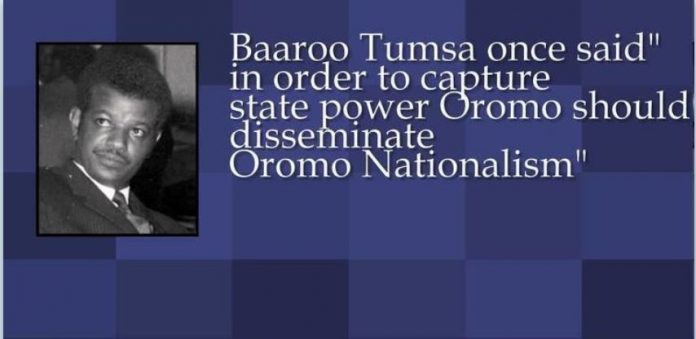
Obbo Baaroo Tumsaa bara 1942 dhiha Oromiyaa Wallagga Ona Boojjii Karkarrootti Abbaa isaa obbo Tumsaa Silgaafi haadha isaa Naasisee Cirrachoo irra dhalate. Deeggarsa obboleessa isaa Luba Guddinaa Tumsaafi obboleessa isaa Naggasaa Tumsaa waliin Naqamtetti sadarkaa 1ffaa baratee sadarkaa 2faa ammoo ‘Ethiopia Evangelical college’ Bushooftuutti barate. Yunivarsiitii Finfinnee galee barachuun bara 1966 faarmaasiin sadarkaa B.SC eebbifame. Erga Yunivarsiitii galee kaasee guyyaa tokkollee qabsoo irra kan of hinqusanne Baaroo Tumsaa gumaacha mul’ataa gumaachaa ture. Dr. Mohammed Hassenfi Kuulanii Guddinaa seenaa Baaroo barreesan keessa: Sochii siyaasaa barattootni geggeessaa turan keessatti qooda guddaa nama qabaataa turan yommuu ta’u bara 1964 -1965 Prezidaantii University Finfinnee ture. Bara 1966tti ammoo Barreesssaa “union of the Universty Students in Addis Abeba “ ta’ee hojjetaa ture. Obbo Baaroo Tumsaa barattoota Oromoo, loltuu Oromoo miseensota Paarlaamaafi beektota Oromoo hunda gidduutti quunnamtii gaarii uumuu danda’ee kun ammoo jaarmiyaa gurmeessuuf bu’uura gudda ijaare.
Obbo Baaroo Tumsaa yaada jijjiirama gurguddaa burqisiisuun nama morkataa hinqabne ture. Quunnamtiifi hariiroo gaarii uummata Oromoo keessatti qabu fayyadamee sochoosuun bara 1965 dhaadannoo “lafti Qotee Bulaaf” jedhu hiriira finfinnee qopheessuun Oromoof jijjiirama guddaa kan fide bu’uura qabsoo hundaa nu akeeke. Bara sana keessa uummatni Oromoo, lafa isaa irratti mirga dhabee, bulchiinsa gabrummaa jalatti lammii sadaffaa ta’ee, qabeenyaan saamamaa, siyaasaan hiraarfamaafi aadaa isaatiin tuffatamaa akka ture. Obbo Baaroon sirriitti hubachuun Oromoo barsiisaa turan. Obbo Baaroon yeroo gabaabaa gidduutti, sagaleeniifi afuurri warraaqsa duraan dhaga’amee hinbeekne, golee arfan biyyattii keessatti baballatee akka dhaga’amuuf hooggansi inni kenne mootummaa Hayile Sillaaseetti yaaddoo haaraa akka biqilchu kan taasise ture.
Seenaa Obbo Baaroo Tumsaa akka ani barreessu kan na dirqisiisee waan lamatu jira. 1ffaan Namoonni yeroodhaaf seenaa sana dhoksuu barbaadantu jiru, 2ffaa waan dhokfamee jiruuf seenaa barreessitoonni sirriitti bal’inaan qoratanii barreessuu irraa of qusatanii namni hojii nama kana sirriitti Afaan guutee dubbachuu sodaatee ture. Kun anaaf naa liqinfamuu dide, Obboo Naggasaa Tumsaa illee waa’ee obboleessa isaa miidiyaa hunda irratti akka hojii isaatti akka hindubbatamne naa ibsanii jiru. Seenaan Jaal Baaroo Tumsaa namni sirriitti hinbeeku, sababni isaa yeroo dheeraaf dhoksamaa ture, yeroo turaa adeemu ammoo ni hirraanfatama achuman dhokata, kana qofa utuu hintaane Dhaabni isaa utuu ibsa ga’aa hinbaasin namootni waa’ee isaa ibsuuf ni rakkatu turan, inni guddaan ammoo Obbo Baaroo Tumsaa jireenya isaa keessatti nama aangoo barbaaduufi nama na arga na arga jedhu ykn Protocal isaafi maqaa isaa dhaadessaa adeemu utuu hintaane nama akka Ogeessaatti duuba taa’ee hojjechuu jaallatu waan ta’eef namoonni alaa hedduu hinbeekan. Namoonni baay’ee Obbo Baaroo Tumsaa bu’uuressaa ABO ta’uu isaallee sirriitti hinbeekan, Obbo Dheeressaa Qixxee garuu Baaroo Tumsaa bu’uuressaafi Hoogganaa ABO qofa utuu hintaane mallattoo ABO ture jechuun ragaa ba’u. Kana uummatni Oromoo beekuu qaba kan jedhuun waan Prof. Mohaammadiifi Aadde Kuulanii Guddinaa barreessan kana hubanoofi ragaa ani qabuun gabaabsee barreessuu yaale.
Qabsoon Obbo Baaroofi hiriyoonni isaa Oromoon lafa ofii irratti garba ta’ee, alagaan humna qawween itti dhufee, biyya isaa dhabe sana deebi’ee akka dhuunfatuuf, qabsoon yeroo jalqabaaf eegalamee, kabajamuu mirga dhala namaafi bilisummaaf daandii qabsoo saaquun, kunoo haala har’a keessa jirruun nu gahuu danda’e.
Obbo Baaroon Nama seenaa qabeessa Maamoo Mazammir yeroo barataa ture Maccaafi Tuulama keessatti gumaacha akka godhu ijaaruun hanga inni wareegametti jaalummaa gaariin waliin qabsoo godhan Obbo Baaroon bara 1966 barnoota yuunivarsiitii akka xumureen hojii kan jalqabe Ministeera fayyaatti itti gaafatamaa gola Faarmaasii ta’uu seenaafi seera hojii faarmaasii biyya Itiyoophiyaa akka jirutti jijjiiruu danda’ee jira. Faarmaasiin Itiyoophiyaa hanga Har’aatti seera inni ittiin hojjetu bu’uura isaa dura kan qopheesse obbo Baaroo ta’uu isaa Manni faarmaasii biyyaatti ragaa ba’u. Obbo Baaroon yeroo muraasa booda yuuniversiitiitti deebi’uun barsiisaa Faarmaasiifi Barataa Seeraa ta’uun eegaluun isaa sochii barattoota yuuniversiitii keessatti barattoota gurmeessuufi siyaasa barsiisuuf haalli mijateef. Obbo Baaroon hoogganaa barattoota yuuniiversiitii ta’uun, gochaa gaarii faarmaasii Itiyoophiyaa keessatti hojjeteen, hariiroofi quunnamtii gaarii Maccaafi Tuulama keessattifi paarlaamaa biyyattiifi waraana biyyattii keessatti qabaachaa tureen muuxannoo kana irraa argateen dhimma ba’uun ABO hundeessuuf haala mijeesseef.
Bara 1967 keessa Waldaan Maccaa fi Tuulamaa yommuu cufamu, mootummaan Hayile Sillaasee murtii du’aa obbo Maammoo Mazammir irratti raawwate, Jeneraal Taaddasaa Birruu ammoo Galamsootti akka hidhamu godhe hogganoota hafan tamsaasetti guci sochii bilisummaa akka hindhaamne gochuu irratti gaheen obbo Baaroo boonsaafi seena qabeessa akka ta’e beekama.
Barattootni Oromoo gumii “walbarraa” jalatti walitti qabuun, akkasumas “Walda Dhidheessaa” jedhamuu ijaaruu Maccaafi Tuullamni akka hinbadne godhee jira. Bara 2001-2002 WFDO bu’uurressuuf waraqaan ala wixinee dhufee fuudhee Obboolessa obbo Baaroo Tumsa obbo Naggasaa Tumsaa bira yeroon deemu fakkeenya Baaroo Tumsaa akkan ta’u seenaafi hojii Baaroo na barsiisan. Itti dabaluun Sagantaa WFDO ani qopheesse sun namni dura dubbise isaan ture, Dhaabni sun dhaabbachuu akka qabu naa mirkaneessan garuu, mootummaan waan si shakkuuf jaarsolii of dura qabadhuu deemi, akka Baaroo hayyuu ta’ii gorsii ijaari malee aangoof jettee dura of hinqabiin naan jedhanii Obbo Bulchaa Dammaqsaatti sagantaa kana akkan kennu na godhan. Yeroo lammataa gaafa Maccaafi Tuulamni Cufamu bara 2003/2004 Uummatni Oromoo bakka itti walitti qabamu dhabuu Obbo Naggasaatti deebi’een ammas gargaarsa yeroon gaafadhu amma waan Baaroon bara 1967 gaafa Maccaafi Tuulaamni cufamee hojjete sun hojjechuun dirqama keeti Jaarsoolii siif barbaanna jedhan. Hundaa’uun WFDO akeekaafi tooftaa Baaroo Tumsaa waggaa 30 dura itti fayyadametti fayyadamuu yaale, ABO waliin quunnamtii nu qabachuu qabnullee Tooftaafi hariiroo Baaroo Tumsaa ture. Gara seenaa obbo Baarootti yeroo deebinu.
Waldaa Dhidheessa keessas hayyoota kutaafi beektota Oromiyaa hedduutu ture. Oromoota ijaaruun, barsiisuufi siyaasaan akka dammaqan gochuun bu’aa guddaa qabaachuu isaa kan hubate obbo Baaroon, maandheewwan hedduun gurmaa’anii Oromoota golee Oromiyaa hunda keessaa walitti fiduun rakkoo uummata isaanii akka mari’atan bu’uura hundeesse. Yuuniversiitii keessatti “Sagalee Diddaa Gabrummaa” (Voice Against Tyranny) qopheessee barattootaa fi Oromoota Miseensoota WMT faca’anii fi dhokatanii jiraatan gargaaruu fi jajjabeessuun illee hojii isaa ture.
Bara 1972 Afaan Oromoo qubee Laiiniitiin barreessuuf, hirmaatni dubbii (grammar) isaa qoratamee akka barreeffamu gochuuf Haayile Fidaafi Abdullahii Yusuuf bakka jiranitti Mitikkuu Tarfaasaa deemee akka isaan quunnamu gochuun ga’een Baaroo Tumsaa guddaa ture. Qormaatafi Barreeffama biyya keessaa funaanuun, Mitikkuu Tarfaasaa gara Jarmanii deemee Haayilee Fidaa faa waliin akka hojjatu baasii isaa danda’uun kan ergan obbo Baaroofi Guddinaa Tumsaa turan.
Bara 1973 Maandhiilee duraan obbo Baaroon ijaaraman hunda biyya keessaa biyya alaa jira, akkasumas J/Taaddasaa Birruu waliin wal quunnamuudhan, hariiroo uumuufi marii gochuun Walgahii ABO bu’uuressu qindeesse. Seenaaniifi guci qabsoo ABO gaafa sun qabsiifame. Walga’ii kana irratti kanneen argaman: Baaroo Tumsaa, Magarsaa Barii, L/Kol.Damisee Dheeressaa, L/Kol. Kabbadaa Qajeelaa, Abbiyyuu Galataa, Addisuu Bayyanaa, Leencoo Lataa, Yusuuf Bakariifi Diimaa Noga’oo turan. Baaroon Sochii sadarkaafi caasaa hunda keessatti qooda fudhachuu, qindeesuu, gurmeesuu, to’achuufi hoogganaa ture. Miseensootaafi mandhee dirqamatti utuu hinbobbaasiin dura sirna naamusa eeggachuu qabaniifi iccitii isaan eeggachuu qaban hubachiisaa ture.
Bara 1974, yeroo mootummaan Hayile Sillaasee kufee, Dargiin aangoo qabatu Baaroon koree (komishinii) qaama ministeeroota durii qoratu keessatti filame. Kun ammoo loltuu Oromoo waliin hariiroo gaarii uummate. Baaroon ABO dhoksaan akka balaa irra hinbuuneef dhaaba seera qabeessa ECHAT (Ethiopia Chikun Hizbooch Tigil) ijaarsa Tokkummaa uummatoota Cunqurfamoo Ethiopia jedhamu gaaddisa ijaareef. Akeekni ijaarsa kanaas qabsoo Oromoo qabsoo uummattoota kibba Itiyoophiyaan waliin qindeessuufi ABO’f dawoo kennuu dha. Hoogganaa ijaarsa kanaa ta’ee Biiroo Barreessaa ijaarsa ummataa seene. Tooftaan kan WFDO ijoollee Oromoo dararamaa turan lubbuu hambisuuf itti fayyadamee ture har’allee itti fayyadamuun gaarii ture. Baaroon ABOs ta’ee ECHAT bu’uuressaafi hoogganaa qofa utuu hintaane nama waan hunda caalaa uummata Oromootti aansee ABO dhaabbilee kan akka mucaa dhalatutti kunuunsaa akka ture Hiriyoonni isaa lubbuun jiran akka Dheeresa Qixxeefaa ragaa ba’u. Baaroon yeroo ECHAT dhaabe rakkoo uummata Oromoo irra dabarsee ilaaludha, uummata akka Oromoo rakkataniifi garboonfatan fira godhachuun Oromoo duukaa ijaaree ture, kun har’allee tooftaa Baaroo kana deemuu qabna, uummata Kuush hunda of duukaa gurmeessuu qabna. Dhaabbilee siyaasaa Oromoo Habashaa jala rurruuqamuu mana sabaafi sablammii hunda fira godhachuun waliin ijaaramuu qabna. Kana gochuuf ammoo dura ijoollee Oromoo dhaaba isaanii walitti tokkoomsuu qabu.
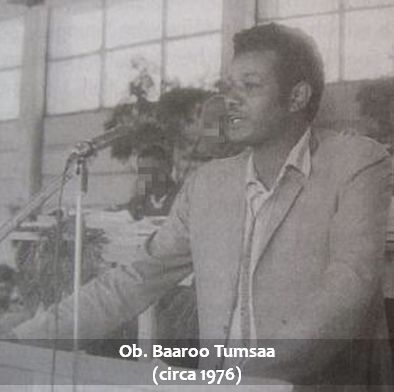
Bara 1976 Baaroo Tumsaa mandheelee dhoksaan ijaare hunda sochoosuun, ijoollee Oromoo qaroo bakka hunda irraa quunnamuufi walitti fiduun taa’umsa ABO inni dura Finfinneetti bara 1976 akka ta’uufi sagantaan siyaasaa dhaabichaa akka mallattaa’u, barruuleen dhaabichi siyaasaa isaa ittiin tamsaasuu danda’u “Bakkalcha Oromoo”, kan dargaggoota ammoo “warraaqa”, kan qaama waraanaa, “Sagalee Bosonaa”, moggaafamee sagantaan siyaasaa dhimma Oromoo irratti akeekkatee fuula tokkoon akka eegalu kan taasise murna obbo Baaroon hogganaa tureen akka ta’e seenaan hojii isaa ni mirkaneessa. Baaroon sirna mootummaa jala, finfinnee taa’ee hogganootafi waraana akkasumas, caasaalee dhaabichaa adda addaa lafa bal’aa Oromiyaa irra diriirsee ture. Hoogganni ABO gaarii tokko akka bahatti bobba’u godhame.
Bara 1977 keessa Baaroon murna kutaa harargee keessatti qabsoo hidhannoo geggeessaa turetti gootummaan makame. Qaamni dhaabichaa dirree bahaa ture rakkoo jajjaboo hedduu keessa waan tureef Baaroo Tumsaa fi Magarsaa Barii Walgahii naannoo sanatti Gurraandhala 1978 ta’u qopheessuu eegalan. Erga bobbaa waraana Xoophiyaa of irraa ittisanii booda sirna dhaabichaa sirreessuu itti fufan Caamsaa 1978 bakka Baaroo Tumsaafi hoogganoonni biraa dirqama kana irra jiranitti miseensuma dhaabichaan dhukaasni banamee Baaroon Wareegame.
Irreecha: Sirna Irreechaa namoota jaha irraa hanga miiliyoonota hedduutti
Oromoonni naannoo golga laga Abbayyaa jiraatan malkaa Abbayyatti bahuun, kan gidduu gala biyyaa ammoo Hora Har-sadiitti bahuun kabajaa turan jedhu qorataan seenaa Giddu gala aadaa Oromoo Obbo Alamaayyoo Haayilee.
Booda garuu haalota turaniifi facaatii uummata Oromoo waliin wal qabatee naannoo naannoo isaaniitti kabajaa akka turan himu.
Jaarraa 16ffaatiin asitti garuu babal’in amantaa Kiristaanaa fi Islaamaan wal qabatee sirni Gadaas tahe kabajni ayyanichaa laafaa dhufee jedhu obbo Alamaayyoon.
Haa tahu malee baruma baraan bayyannataa dhufuun amma adunyaa guutuun hanga barutti gaheera jedhan. Bara mootota Itoophiyaa keessa kabajni ayyaana kanaa maal fakkata ture?
Ayyana Irreechaafi bulchiinsa Minilikii hanga 1983tti
Bara bulchiinsa Minilik keessa kabanji ayyana Irreechaa akka malee dadhabaa dhufe. Oromootnis dhokachuudhaan kabajuuf yaalaa akka turan qorattotni seenaa lafa kaa’u.
Akkuma walitti dhiyeenya jireenya isaaniitti wal waamuun malkaatti bahanii kabajaa turan jedhan qorataan seenaa Obbo Alamaayyoon.
Moototni Minilikii hanga Mootummaa Dargiitti jiran amantaan tokko qofa akka jiraatu waan barbaadaniif namni kamiyyuu amantaa biraatti qabamee akka jiraatu eeyyamaa hin turre.
Yeroo sana amantaan Kiristaanaa qofa akka jiraatu waan barbaadaa turaniif akka amantaa seexanaatti ilaalamaa ture jedhu Obbo Alamaayyoon.
Bara Haayilesillaasee fi Dargii Manguddota Liiban, Galaanii fi Handaatu dhokatanii subii ka’uun namootni xiqqoon dhaqanii irreefatanii galaa turan kan jedhan ammoo baObbo Dirribii Damusseeti.
Mootichi Haayilesillaasee illee kabaja ayyaana kanaa waan beekaniif dhorkisiisaa akka turan Obbo Alamaayyoon ni dubbatu.
Haa tahu malee Hora Har -Sadii akka bakka Bashananaatti itti fayyadamu jedhan. Qabsoo baratootaa cimmaa Oromoonni hedduun aarsa tahaniin kan taayitaa qabate mootummaan Dargiis mirga amantaa uummataa eeguu waan hin dandeenyeef ukkaamsaan itti fufe.
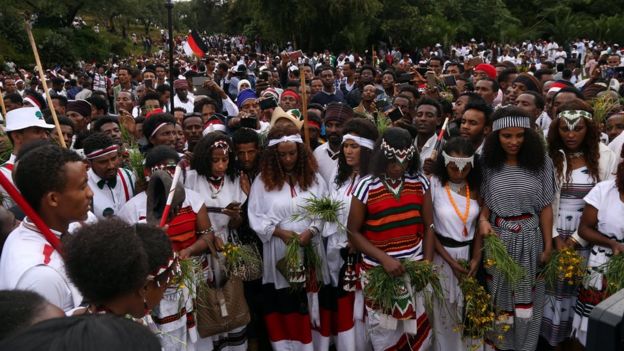
Kanaaf namni Irreecha deemu hunduu akka deeggaraa ABOtti waan ilaalamuuf darara guddaan namoota hedduu irra gaa akka ture kan himan ammoo Obbo Dirribii Damusseeti.
Waldaan Maccaa fi Tuulamaa erga hundeeffamee mirga Oromoo, Tokkummaa Oromoof fi misooma Oromoof qabsoo gaggeessaa waan tureef Irreechi akka deebi’uuf dhaaba shoora olaan bahate akka tahe Obbo Alamaayyoon dhugaa bahu.
Haa tahu malee Waladaan Maccaaf Tuulamaa fi ABO’n waliiti qabamuun akka balaaleffatamu gochuun mootummaan tarkaanfii irratti fudhataa turuu himu.
Irreecha bara 1983 booda
Erga mootummaan Dargii kufee naannoleen hundeeffamanii mirgi namoomaa akka kabajamu jedhamee Waldaan Maccaafi Tuulamaa hojii eegale akka itti fufuuf sochiin jalqabame.
Waldichi hariiroo ABO waliin qaba jedhamee maqaan shororkeessumaa waan itti kennameef kaayyoo Oromoo ganamaa hundeeffameef sana galamaan gahuu hin dandeenye.
Irreechis isaan keessaa tokko waan taheef jibbamnus namootni Biiroo Aadaa fi Turizimii Oromiyaa keessaa cimnee hojjechaa turre jedhan Obbo Alamaayyoon.
Bara 1988
Obbo Dirribii Damussee kabaja ayyaana Irreechaaf bara 1988 dargaggootni manguddoota Waldaa Maccaafi Tuulamaa waliin walitti makamuun namoota jaha tahantu magaalaa Finfinnee irraa deemuun irreeffate jedhan.
Namootni bakkeewwan biroo irraa hirmaatan hin jiru ture. Amantaa seexanaa balleesinee turre deebisanii kaasaa jiru bakka nuyi awwaallee jechuun otuma dhiibbaa nurraan gahanii cimnee itti fufne jedhan Obbo Dirribiin.
Bara 1989
Magaalaa Finfiinnee irraa namoota 14 tahan irreecha deemuun akka kabajan BBCtti himan.
Namootni akka Lammii laggasee fi Fayisaa Dirribsaa fa’a jedhaman yoo uummata keenya baay’inaan nuuf fidde jennee daabboo lama lama wareeganii galan jedhu Obbo Dirribiin.
”Anis yaa waaqayyo yoo saba kana gara eenyummaa fi aadaa isaatti nuuf deebiste jedheen achuma dhaabbadhee wareega wareege,” jedhan Obbo Dirribiin.
Bara 1990
Namoota 20 hin caalletu Finfinnee irraa deeme. Waliigalaan namootni hanga 2,000 caalan dhufanii irreeffatan jedhu Obbo Dirribii. Guyyaa sana daabboon wareegamee ture hiramee achuma odaa jalatti galateeffanne jedhan.
Dabalataan waanan galii argadhu irraa wareege gara qarshii kuma 6 waanan argadheef isaan sagalee guddistuu biteen, wal tajjiin irra dhaabatan mijeesse jedhan Obbo Diribii Damussee.
”Ani Irreechi maal akka tahe wal tajjii irra dhaabadheen namoota muraasa achi jiraniif ibse. Amantaa seexanaa akka hin taanes, duudhaa uummata keenyaa tahuu fi waaqa tokkichaaf galata galchuu akka tahen dubbadhe.
Bara 1991
Magaalaa Finfinnee irraa qofa konkolaataa guutuun gara namoota 60tu deemee irreefate. Waliigalaan namootni kuma 20 tahantu irraafatee gale. Karaa waldaa Maccaa fi Tuulamaas dubartoota shan tahanitti uffata aadaa uwwisuun fuudhanii akka deeman himu.
Bara 1992 fi 1993: Dargaggoonnii fi shamarran Oromoo wal walitti himuun kumaatamaan dhufanii irreefataa turan. Yerootti uummanni keenya dammaqee maalummaa Irrechaas hubate ture jedhan.
Obbo Alamaayyon ammoo bara 1993 deegartootni ABO fi ODP [Dh.D.U.O] walitti bu’anii waan tureef akka irreechi kan paartii kamiiyyuu hin taaneef irratti hojjetamaa turee furamuu himan.
Bara 1994: Lakkofsi namoota irreecha irratti hirmaatanii Miiliyoona tokko gahuu kan himan Obbo Dirribiin ergasii wagguma waggaan hanga adunyaa irratti dinqisiifamutti guddate jedhan.
kun hundi garuu hidhaa fi dhiibbaa hedduun booda akka tahe himu.
Irreecha bara 20000 as
Oromonni kaabaa fi Kibbaa, Bahaa fi Dhihaa wal tajjii irratti wal arguun waaqa galateeffatanii fi tokkummaa isaanii itti ibsani dha jedhan Obbo Alamaayyoo Haayilee.
Lakkoofsi namoota irrecha irratti argamanii biyya keessaa fi alaan turistoota dabalatee gidduu galaan Miiliyoona afuurin ol jedhe hayyoonnin dubbise lamaanuu.
Keessumaa Irreecha bara 2008 irratti namootni Miiliyoona jahaa ol tahan argamuu Obbo Alamaayyoon himu. Kanuma irraa ka’uun sirni Gadaa akka adunyaa irratti beekamu taasiseera jedhan.
Haa tahu malee lubbuun namoota hedduu achitti waan darbeef bara darbe gara miiliyoona shanii kan tahutu argame jedhu.
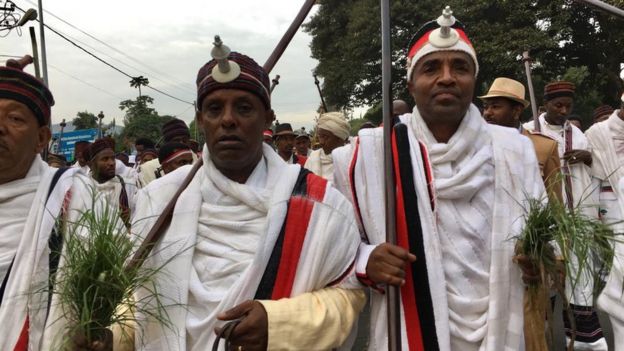
Irreecha bara kanaa maaltu adda godha?
Obbo Alamaayyoo Haayileefi Obbo Dirribiin bara kana lakkofsi namoota argamanii isa yeroo kamirraayyuu adda taha jennee abdanna jedhu.
Barri kun uummata keenyaaf bara injifannoo gurguddaa ture, bara rakkinni siyaasaa guddaan jiruyyu miiliyoonotaan bahee irreefachaa kan ture bara kana immoo garmalee dabaluu danda’a jedhu.
Gama biraa akka durii kun alaabaa paartii kanaati, ati deegaraa paartii kanaatii wantootni jedhaman waan hafaniif gammachuu fi nagaa guddaandhaan uummatni keenya irreefatee gala jennee abdanna jedhu.
Uummatni Oromoo Gadaa shan jalatti qoodamnee haa jiraatu iyyuu malee gaafa irreechaa tokkummaa isaa kan ittiin ibsu waan taheef hundinuu argamuuf yaala jedhu Obbo Alamaayyoon.
Irreechi bara kanaas kan Tokkummaa fi milkoominaati jedhan. Abbaan Gadaa Birmajjiis bara kana Baallii Abbaa Gadaa Meelbaaf dabarsee kan kennu taha.
Irreechi seenaa kana dabarsee lakkoosi Oromoota hirmaatan biyya keessaafi alaa waggaa waggaan miliyoonotaan dabaluurra darbee sabaafi sablammoota biyyaa keessa akka Sidaamaa, Gaamoo, Alaabaafi kan biroon irratti hirmaataniiru.
Maddi: BBC Afaan Oromoodha
BARA KANAMMOO HOREA FINFINNEE kan Waggaa 150 booda Irreenfatameefi Bishooftuu, Harsaditti, haala adda taheefi Ummanni Oromoo hedduun irratti argamuun kabajameera.
Suuraalee Bara kanaa muraasni
![Irreecha is celebrated at the sacred grounds of Hora Harsadi (Lake Harsadi), Bishoftu, Oromia. [Yonas Tadesse/AFP]](https://www.aljazeera.com/mritems/Images/2019/10/6/b458bb314a694cb6b21e1f3f7ba0780f_8.jpg)
—
![The Oromos celebrate Irreecha to thank Waaqa (God) for the blessings and mercies they received throughout the previous year. [Yonas Tadesse/AFP]](https://www.aljazeera.com/mritems/Images/2019/10/6/8ca12a6ff2bf410aa7d180d947c86dc7_8.jpg)

—
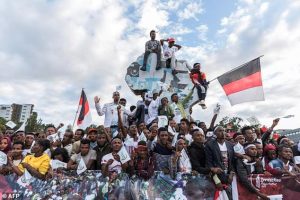
—
